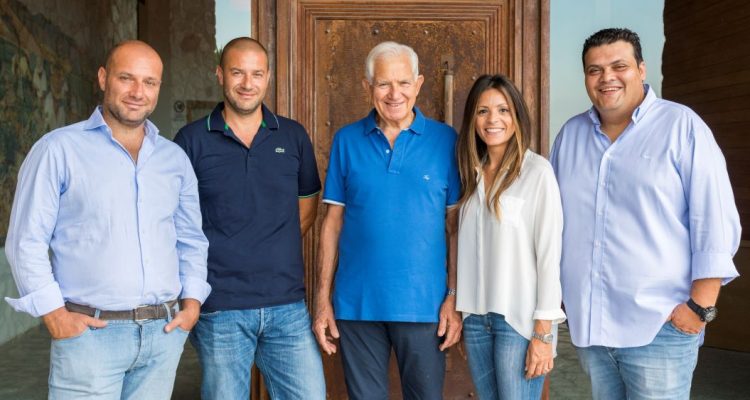Before I visited Calabria, all I’d heard was that this is a remote region, populated mainly by small farmers, along with smugglers and others in similar vocations. Oh, and the region is the ancestral home of famous Hollywood personalities such as actor Stanley Tucci and director Francis Ford Coppola.
All – or none – of this may be true. For centuries, this region was little known, almost a closed society, even to the rest of Italy. Not too long ago, one wine-making group, the Librandi family, has set out to change this perception.
Geographically situated on the toe of the Italian “boot,” Calabria has a strong, historic wine tradition. In fact it dates back over 2,500 years, when the Greeks colonized the area in order to grow grapes and send wine back to Greece. Wine was an essential element of Mediterranean culture then, and it’s still a big part today. Traveling through the region, outside of a few cities, one sees plenty of vineyards amongst the small farms, forests and national parks.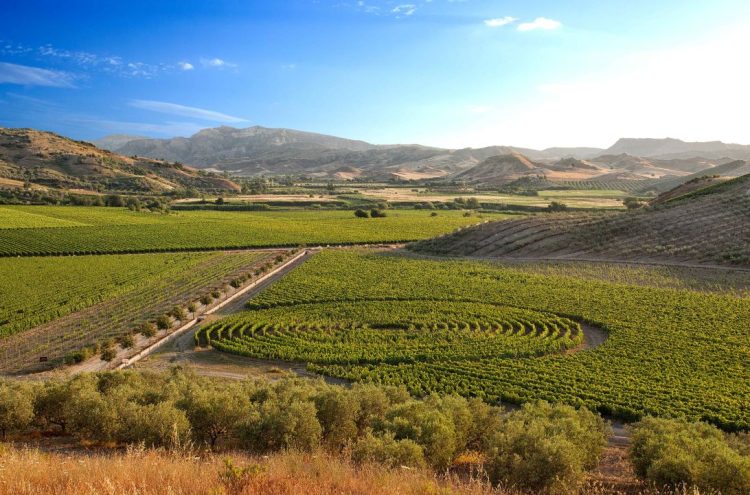
For centuries, the region of Calabria has been a far-from-wealthy area. The majority of the inhabitants lived in small villages in the mountainous areas – which is still the case, according to Paolo Librandi. Paolo now co-owns the Librandi winery with his brother and two cousins.
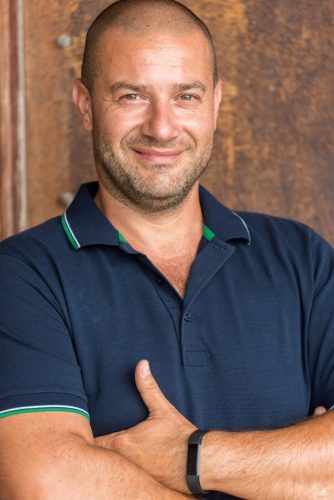
Their grandfather, who founded Librandi, was the tenth of ten children, a child who left school at the age of nine to go to work. He built a successful life, had a wife and six children, and acquired a hefty six hectares (15 acres) of vineyards during his lifetime. He grew grapes on his land and sold most of them every year. Until 1953, when he took the innovative step of bottling and selling his own wine.
The Calabrian tradition was for families to grow just enough grapes to make enough wine for their own households. In the 20th century, those with larger vineyards began to supply the region’s winemaking cooperatives.
As wine demand continued to increase throughout the century, some industrial winemakers also moved into the area. However, both the large industrial producers and the cooperatives prioritized quantity over quality. Paolo explains that until recently, the strong Calabrian wines were mainly exported from the region as bulk products, blended into wines in the north of Italy, and even France. It’s not clear how legal this practice was/is, but that’s the way of the world.
Librandi Today
The Librandi winery is located by Calabria’s east coast, which borders the Ionian Sea. When Paolo’s generation inherited, his father and uncle had already taken further steps to innovate and improve the wines. They marketed the wines to restaurants and hotels, first in Italy, and later further afield. Librandi has been winning awards since the pivotal year of 1988 when one of their wines first appeared in the Gambero Rosso Tre Bicchieri guide to the best wines in Italy. Paolo frankly admits that many Italians were quite surprised to learn that a quality wine could come from Calabria.
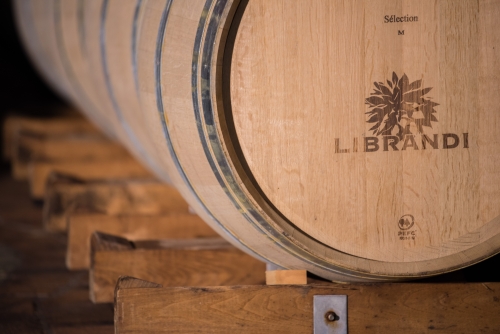
By then the Librandi family had bought more land, and were making wines with “international” grapes like cabernet sauvignon, cabernet franc, chardonnay and sauvignon blanc. Initially, they had considered using Calabria’s indigenous grapes but concluded that research and replanting would take too long, and they needed income immediately.
Giving Indigenous Grapes New Life
Even while increasing production of their popular international varietal wines, Paolo’s father and uncle harbored the concept of reviving indigenous grapes in the back of their minds.
They took their first step in that direction in 1993 when they transitioned the family’s original fifteen acres into an experimental vineyard for studying indigenous grapes such as gaglioppo and magliocco. Thirty years later, Paolo is proud that they have identified, analyzed and propagated many clones of these native grapes. Which means that, in the region of Calabria, when anyone is looking at planting or replanting a vineyard, they are now able to choose the best nursery grown grapevine clones for their particular soil and exposition.
Librandi is still a family-run business, though they now own 232 hectares (573 acres) in parcels throughout Calabria, producing 2.5 million bottles of wine per year. Librandi makes white, red and rosé wines. The current adult generation is keeping their eyes on all of their young children, speculating about who might be interested in continuing their heritage.
The Evolution of Rosato with Calabrian Cuisine
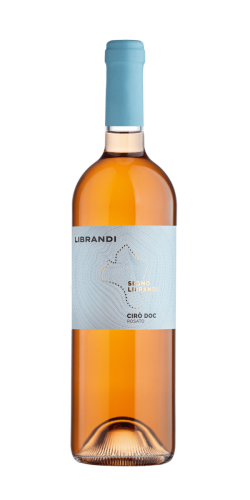
Rosé in Italian is rosato, and this is the most traditional wine of Calabria. Historically, on family farms, red grapes were harvested and simply left to ferment for a few days. Then the wine was racked off the skins and settled into barrels. This became the family’s drinking supply for the rest of the year. The wine, made with gaglioppo, was light red, and it paired with pretty much everything. Of course, there may not have been a lot of “everything” to eat in this culture.
Paolo explains that because there was “never wealth” throughout most of Calabria, people made “amazing recipes based on nothing.” For example, if they had fava beans to eat, they also chopped up the empty bean pods, added bread crumbs and local chilis and herbs, and fried it in olive oil to make another dish. One of the major local ingredients has always been chili pepper, to add flavor. It turns out that Calabrian rosato wine pairs perfectly with a little spice.
One more thing about Calabria: Paolo thinks that the first Calabrian DOCG (the highest quality in Italy) may be designated in the very near future, which will be a great achievement for this remote, southern region.
Wine Reviews
Originally, Calabrian rosato was simply a light red wine. Today, Librandi makes it even lighter, reflecting current national and international expectations for a rosé wine. The 2022 Segno Librandi Cirò Rosato DOC is on the market now. It’s a light orange color, made from 100% gaglioppo grapes, fermented in stainless steel, not oak.
The 2022 Segna Librandi Cirò Bianco DOC is made with 100% greco bianco. This white grape has nothing to do with the well-known greco di tufo of Campania; instead, the Calabrian name refers to the Greek heritage of this regional grape. This is a casual summer wine, often served at beachside cafes with a meal of local crayfish.
The name of another Librandi white wine also evokes the area’s Greek heritage. The Librandi Critone Calabria Bianco DOC is named for a wealthy philosopher who was a disciple of Socrates. The 2022 vintage is 90% chardonnay and 10% sauvignon blanc, a light and easy to drink wine which is also vinified in stainless steel.
The 2021 Segno Librandi Cirò Rosso Classico is a light red, and it’s another very good wine to have around because it pairs well with a multitude of foods, great for a casual gathering. The wine is brightly fruity, with aromas of cherry and violets, and more cherry on the palate and end palate. Serve this red wine lightly chilled.
The 2020 Duca Sanfelice is designated Cirò Riserva Rosso, Classico Superior DOC. It’s made with 100% gaglioppo from vineyards all around Calabria, which are reflected in the label design. Intense aromas give way to a medium light body with good acidity and light tannins in the finish. Overall, the wine is lighter than expected. A traditional food pairing would be pork, slow cooked in red wine and seasoned with bay leaves.
Gravello is Librandi’s single vineyard line. The 2020 Calabria Rosso IGT comes from their Arcidiaconato estate. The grapes are 60% gaglioppo and 40% cabernet sauvignon. The vineyard area is bisected by a traditional pathway, with cabernet on the hillside and gaglioppo on the valley side. The wine remains in oak for twelve months, with a further six to twelve months in the bottle before release. It will age for decades, with optimum drinking beginning five or six years after harvest. The name “gravello” indicates this wine is on the lighter side of serious (grave). It has a light, fresh spicy taste and pairs well with aged pecorino cheese or brick-oven lamb.

